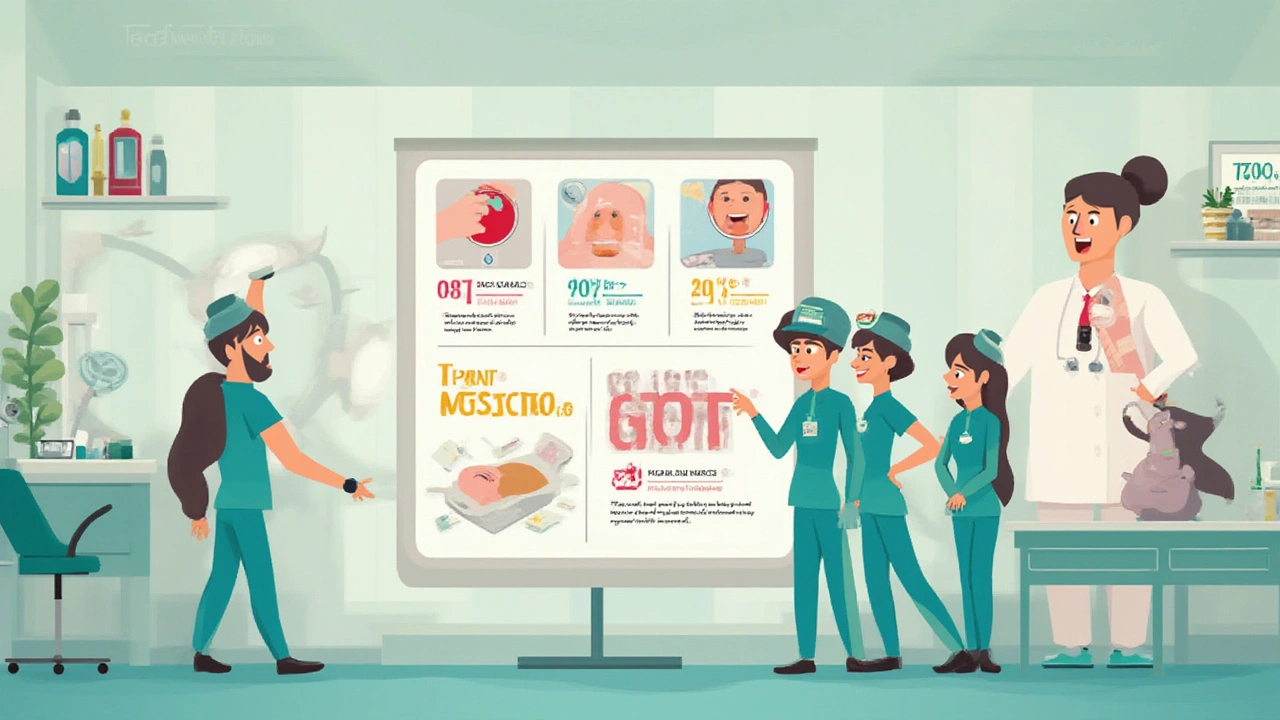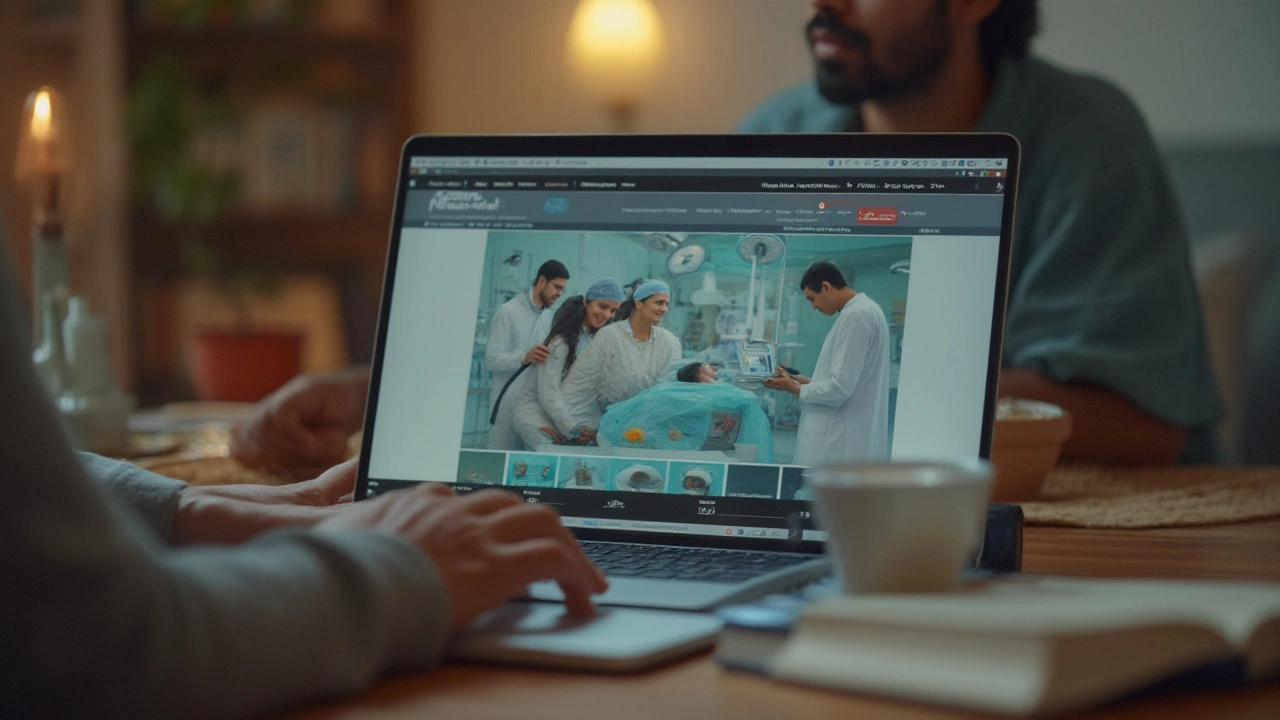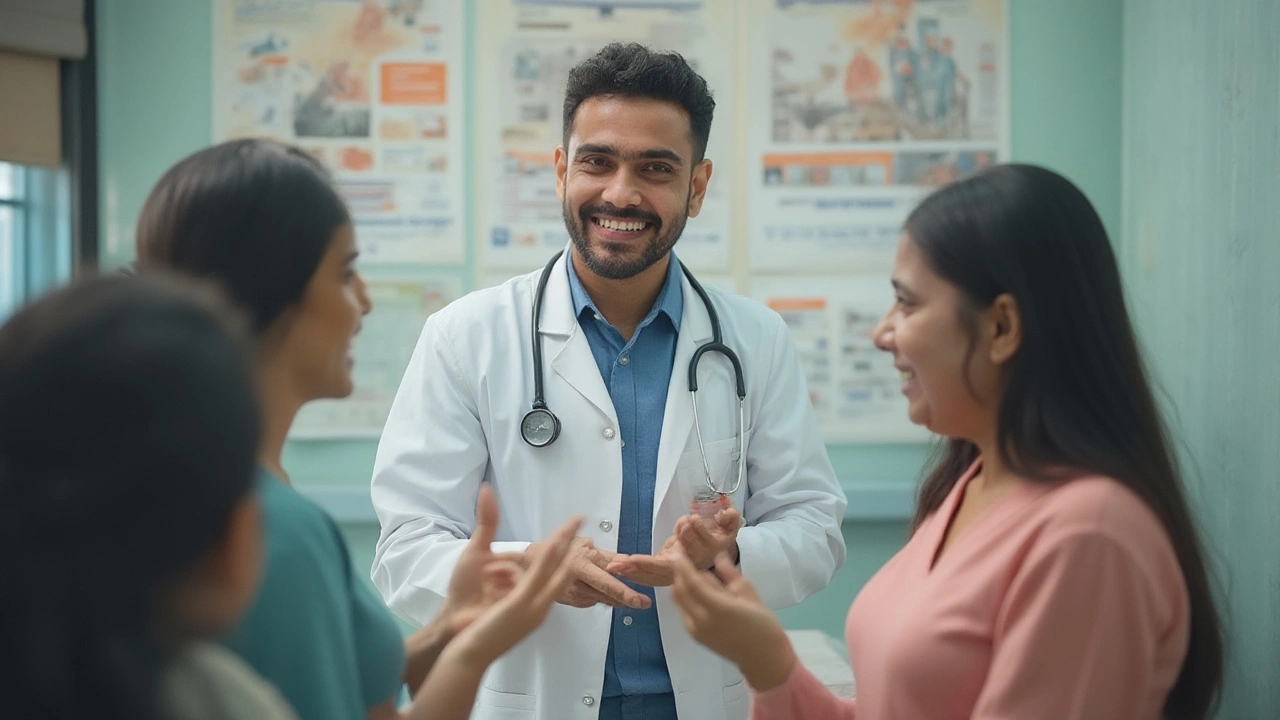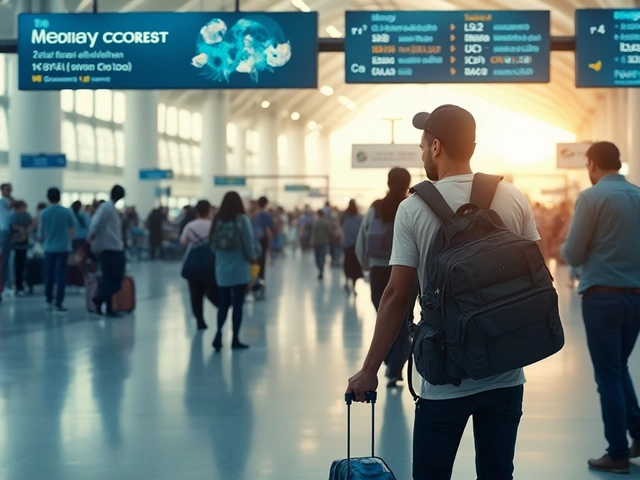Pick a surgery—any surgery. The word alone is enough to make most people squirm. Even with modern medicine and a mountain of technology, the idea of being under the knife is the stuff of late-night worries for many. But here’s something you probably haven’t heard: there are actually surgeries that are so safe, their risk is almost non-existent. We’re talking about the “I stubbed my toe worse than this” kind of safe. And yes, you’ve probably heard about all the complex operations that need a whole team of pros in scrubs and million-dollar machines—but nobody tells you which one ranks as the safest of them all. Until now.
Defining the Safest Surgery: How Doctors Actually Measure Risk
Doctors love numbers. Before they call a surgery "safe," they need solid data. So, what counts as a safe surgery? For pros in the operating room, safety isn’t about someone’s story or an Instagram post; it’s about the chances of something really bad happening—like infection, anesthesia problems, or major complications—being close to zero. In other words, the safest surgery is the one with the lowest rate of bad stuff happening.
Let's put this in perspective. Every medical procedure carries some level of risk, but it's a sliding scale. You’ve got heart transplants on one end—high stakes, long recovery. On the other, you have operations that are more routine than getting a filling at the dentist. But how do they really score these surgeries? Hospitals track “complication rates” and “mortality rates.” Actual statistics tell the story, and the specialist societies (like the American College of Surgeons) keep close tabs.
Check out this handy safest surgery stats table for some context:
| Type of Surgery | Average Complication Rate | Average Mortality Rate |
|---|---|---|
| Cataract Removal | Under 1% | Less than 0.01% |
| Repairing Torn Eardrum | 1-2% | Less than 0.01% |
| Vasectomy | 1-2% | Zero reported deaths |
| Wisdom Tooth Removal (Simple) | 1% | Extremely rare |
| Mole or Skin Lesion Removal | Less than 1% | Zero reported deaths |
Cataract surgery is the clear winner on most lists. This is the operation where the cloudy lens of the eye is quickly swapped out, usually in under 30 minutes. Millions of people (well over 30 million worldwide every year as of 2024) have cataract surgery annually. The rate of major complications is so low, some surgeons call it "as safe as eye drops." Imagine school gym lines—but everyone walks out able to see better, no stitches, no overnight stays. And since it’s done with local anesthesia (you stay awake, just numbed), the chances of anything going wrong are about as low as you’ll find.
Vasectomy is another example. It’s a quick procedure to ‘snip’ the tubes that carry sperm, done in a clinic, usually done in less than 20 minutes. The most common side effect? A little soreness and the world’s lamest ice pack jokes. Major complications almost never happen, and if they do, it’s usually just mild swelling or bruising—hardly anything to lose sleep over. Reports from major urology associations estimate that out of hundreds of thousands of vasectomies, dangerous complications are almost unheard of.
Let’s not forget about ear tube placement for kids, mole removal, or even laparoscopic tubal ligation (that’s the fallopian tube tie-off). These also make the safest-surgeries list, boasting sky-high satisfaction rates and very rare bad outcomes. Two things set these procedures apart: they’re almost always elective (so you’re healthy walking in) and recovery means you’re binge-watching shows, not stuck in a hospital bed.
A big tip here: follow your clinic’s prep and aftercare instructions to the letter. Sticking to the advice—things like avoiding that swim, or not picking at the bandage—means your odds of a smooth recovery shoot way up.

Why Some Surgeries Are So Much Safer Than Others
You might be wondering: what makes one surgery way safer than another? Location matters—a lot. Surgeries that don't poke around major organs or blood vessels are naturally lower risk. Take mole removal or cataract surgery—both keep far away from your heart or vital organs, which instantly shoves them into the “super safe” category. These procedures use local anesthesia, so you get to skip the sleep-inducing drugs that sometimes cause problems.
Another key factor: how invasive the surgery is. The less the body is disturbed, the less time for trouble to show up. For example, laparoscopic (keyhole) surgeries involve tiny incisions and microscopically small tools. Fewer stitches, less pain, and infection rates plummet. Skin-level surgeries, like removing a cyst or benign mole, usually finish within minutes and just need a bandage—minimal fuss, minimal risk.
There's also surgeon experience. Studies find that the best predictor of zero complication is a pro who’s done the procedure hundreds, maybe thousands of times. A surgeon who does twenty cataract operations a day? You want that person. They're nimble, and nothing surprises them anymore. Specialized surgical centers (think: eye clinics or outpatient vasectomy centers) focus only on these basic procedures, which means quick turnarounds and proven track records. Less time in the operating room and less anesthesia means lower risk all around.
Now, patient health comes into play as well. Someone going in for elective surgery is usually in much better shape than someone rushed into the emergency room. Healthier people heal faster, infections are rare, and the body’s defenses are running at full power.
Another thing people don’t always think about: the environment. Surgeries done in outpatient clinics or specialized centers have fewer germs floating around than giant general hospitals. Superbugs and nasty bacteria love to lurk in huge hospitals, but clinics are smaller, easier to clean, and see fewer very sick patients. That matters a lot, especially when avoiding infections like MRSA or C. diff.
Avoiding unnecessary stress and following your doc’s advice—hydration, nutrition, no “just one last smoke”—makes a big difference. There’s a reason nurses chase you down with a bottle of water and reminders to get up and walk. It’s not just being nice; it’s proven to lower complication risks.
A quick myth-buster: no surgery is 100% risk-free. Even laser eye surgery or wisdom tooth removal, which are famous for how simple they seem, still carry tiny but real risks—like dry eyes, or rare nerve injuries during dental extraction. That said, for the most part, the chances of major trouble are less than the odds of spilling your coffee on the way home from your appointment.

How to Make Any Surgery Safer: The Doc’s Playbook and Real-Life Tips
Okay, so you know which surgeries top every safety ranking. But what if you’re scheduled for any kind of surgery—even one of the “safe” ones? Here’s how regular folks can tip the odds even more in their favor:
- Be completely honest in your pre-op check. Tell the truth about meds, allergies, past surgeries, even if it seems silly. Holding back can mess with your care.
- Show up healthy. Got a cold? Tell your surgeon—they might move your date. Avoid smoking, booze, and late nights the week before your surgery.
- Bring a buddy. Not just for the ride home, but if you need backup in remembering instructions and spotting post-op issues.
- Ask your surgeon, “How many of these have you done?” There’s nothing rude about it. More practice usually means less risk.
- Stick to the pre-op diet and medication plan. Too much food or skipping a pill can throw off your anesthesia or clotting factors.
- After surgery, follow recovery tips religiously. That means ice, elevation, and, yes, avoiding picking at stitches (tempting as it is).
- Spot red flags early. Swelling, redness, or chills? Don’t wait. Call your care team right away.
Health experts say patient involvement lowers complications. For example, a big study out of Sweden tracked thousands of patients who got text reminders about wound care. Their infection rates dropped by more than 30% compared to patients who didn’t get reminders. That’s real-world proof: a little engagement goes a long way.
Modern medicine stacks the deck, with safety protocols like “surgical checklists” (the same idea airlines use before take-off), personalized anesthesia plans, and rapid recovery pathways. Some clinics use barcode scanning for tools and sponges—no chance anything gets left behind. Others do same-day telehealth follow-ups to catch problems early.
Remember, your own choices are a huge part of the equation. Choose clinics with good reputations and clear infection control policies. Don’t be shy about discussing your fears or asking questions. The best surgeons actually like nervous patients—they ask more questions and stick to the plan, which means safer outcomes.
There you have it: if you ever need surgery, pick a procedure that stays well away from your vital organs, is done under local anesthesia, and has a surgeon who does this in their sleep (metaphorically speaking, of course). Stick with the prep and aftercare advice, double-check your clinic’s track record, and you’re all set for recovery smoother than your morning coffee. There’s no magic trick to zero risk, but for some surgeries—you can get pretty close.





